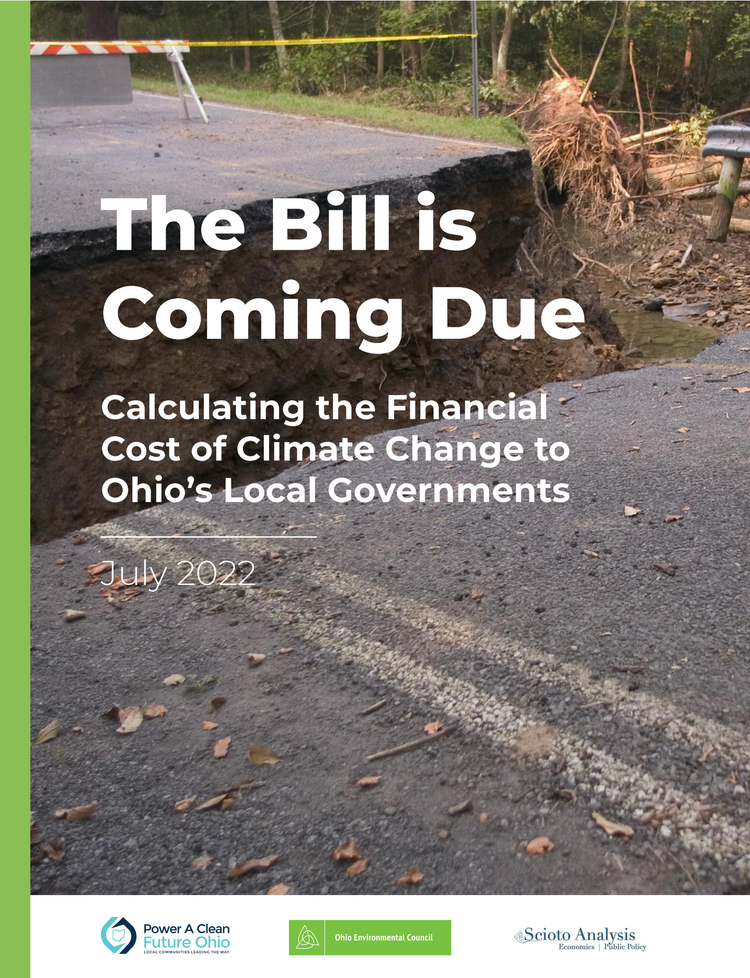Campaign
Report: Climate Change Could Cost Ohio Municipalities Nearly $6B Annually by 2050
Ohio Environmental Council, August 3, 2022
THE BILL IS COMING DUE:
Calculating the Financial Cost of Climate Change to Ohio’s Local Governments
From modernizing infrastructure and ensuring public safety, to improving school systems and tackling the opioid crisis, Ohio’s local governments shoulder the costs of many critical public policy issues. Underlying each of these diverse and complicated issues is one big question: what will it cost?
Municipal officials already grappling with difficult budget decisions now have an additional challenge to add to their strained financial resources: climate change. Communities across Ohio have been coping with increasing temperatures, flooding, erosion, and climate-related extreme weather events for years. These climate damages are projected to only intensify in approaching decades, generating new costs associated with climate-driven disaster recovery and adaptation, as well as creating a major strain on already overstretched taxpayers and cash-strapped local governments. Unless we see drastic changes at every level of government to address carbon emissions in the next few years, these impacts will only continue to worsen — and the cost to address them will skyrocket.
The financial burden that climate change is placing on municipal governments is not well understood. This study aims to address this knowledge gap by assessing a subset of climate impacts that will create significant costs for local governments in Ohio. In total, our analysis identified 50 unique climate impacts that Ohio municipalities will have to address across the range of their mandates of infrastructure provision, public health services, housing, public safety, and more.
We estimate that the state of Ohio will need to increase municipal spending between $1.8 billion to $5.9 billion per year by midcentury in order to adapt to the challenges of a worsening climate crisis.
When releasing the report, Nolan Rutschilling, Managing Director of Energy Policy for the Ohio Environmental Council, shared, “There is no time to waste. The costs to address real-time climate impacts and prepare for even more dangerous future impacts continue to grow. This is an all-hands-on-deck moment requiring action by local, state, and federal leaders.”
ADDITIONAL RESOURCES
READ: Report Launch Press Release

